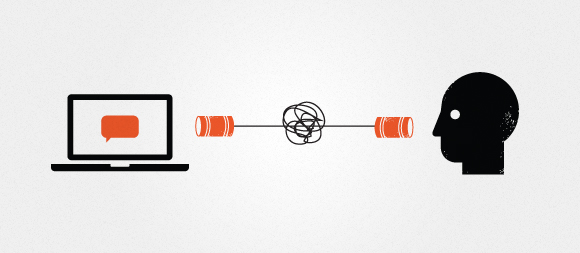“Hey man. Pleasure to meet you. What do you do?”
“Buy me.”
“I’m sorry?”
“Buy me.”
“I’m sorry. I don’t —“
“Buy me now.”
“What are you —“
“Just buy me.”
“Buy you what?”
“Me.”
“What?”
“Me.”
At this point, I’ll start reaching for my chloroform and hope for the best. But this is the conversation many brands are having with consumers these days. Brands, services, and the legitimately eccentric. Recently I’ve stumbled onto the idea of design as discussion. About how our job as business communicators is to have the best conversations with our end users to ensure both parties get what they want. I’m sure it’s not a new idea, but it’s one that I’ve been looking into, and this is post will only scratch the service.
With the over-saturation of brands being what it is these days, it’s our job as digital agencies to help marketers put their best foot forward. In some instances, we’re helping them get dressed for that big job interview, getting them all gussied up for their first date, teaching them that it’s not about THEM anymore. It’s about US. It’s about YOU. Brands are slowly understanding the value in listening intently to their user and bending their strategies to fit. And if I’ve learned anything through many a failed relationship, it’s that listening is the key to success.
That’s where design as discussion comes in. Every time you interact with a brand, be it through the web or on the street or wherever, you’re having a conversation with it. Personally, if I pick up a menu at a restaurant and it has Comic Sans plastered everywhere, the conversation from my end will include a lot of four letter words. The reason Apple has done so well is that they listened to their customers. Every time you pick up your iPad, you’re having an amazing “conversation” with it, gesturing every which way because the user experience is so strong.
Same goes for something like Toms shoes, for example. They’ve created a great business model: buy a pair of shoes, and a pair gets donated to someone in a country that needs a pair of shoes. Simple. Not only are their shoes relatively fashionable, but their audience feels a warm glow when they pony up the cash because they feel as if THEY’RE helping.
The “good conversation” model works for web sites, as well. It’s up to us to create a solid experience so the mood of the conversation stays positive. Simple, one-page scrolling sites are becoming more and more popular these days because people like to scroll, they love the discovery. Designs that utilize parallax scrolling are flashing their toothy grins to hopefully make for a better talk, and in some instances, like the Nike Better World site, it works. But it’s all about us making sure we keep the conversation going. Ensuring that everyone’s voice is being heard, not just the brands.
Content and context are now paramount, and it’s our job to pay close attention to the nitty gritty. It’s our job to know when to speak up, when to sit back, and when to have informed discussions and help our clients do the same. It’s also our job to be ready for that conversation whenever our audience is ready. That means mobile-ready web sites. Responsive sites. Less QR codes (or better uses of them). We want people staying with us, keeping eye contact, not crossing their arms in some weird form of virtual body language.
So think of the conversation you want to be having with your end user. You have no idea what state of mind they’ll be in when they first interact with you. Hopefully you can keep them from grabbing their chloroform-soaked rag.
Skip to sharing
